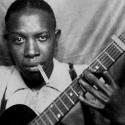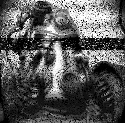|
Is there any sort of guides for putting together a complete system at different price points? E.g. Budget $500 for a 3.1 system Budget $750 ... Budget $1000 There are a lot of articles like that when it comes to building out PC systems, would be nice for something similar in home audio because there is an assload of information to digest for newcomers. My particular situation: Budget $500-750 for complete home audio. I have a Sony X900H TV. I need a receiver and would like a 3.1 setup.
|
|
|
|

|
| # ? May 23, 2024 17:53 |
|
Hughmoris posted:Is there any sort of guides for putting together a complete system at different price points? People ask for that a lot, but sound is a subjective thing and you might want to listen to speakers first before you buy.
|
|
|
|
Hughmoris posted:Is there any sort of guides for putting together a complete system at different price points? This is a link to the post where I listed what I purchased. I bought all this in April 2013 and I still use it today. The Polk 10 inch subwoofer was not worth it at all and I ended up upgrading to a Polk PSW505 that I picked up for 150 bucks on Black Friday in 2014 I think. I did pick up the matching rear speakers a few years ago when they were on sale for like 99 bucks a pair. I didn't use them at my old house, but my new house I have room for the rear surrounds. https://forums.somethingawful.com/showthread.php?threadid=3384469&userid=69848#post414294802 Speakers are subjective, and receivers have changed in the last 7 years, but it'll give you a good idea. Hitup slickdeals for deal alerts on receivers and speakers. If you're not in a hurry you can grab some good deals.
|
|
|
|
I tried watching Mothman Prophecies on Amazon Prime and it was the worst case of quiet unhearable dialogue combined with loud sudden back6ground music stings. I had my hand on the remote moving the volume up and down the whole time. Not every program on every app has this issue, some are just fine. I'm using a 2017 Shield hooked to a Denon AVR-S510BT on a Sony X900F. The receiver has a 'night mode' that is supposed to help with dynamic range compression but I can't hear a difference. I think the issue are my tiny Yamaha 5.1 NS-SP1800BL speakers. I want to replace the front two speakers (and possibly the center channel) with something bigger. 1. Anybody have experience upgrading from little to big speakers? Did it help mitigate dynamic range issues for you? 2. Is it possible to get a decent pair of bookshelf speakers for $100 USD?
|
|
|
|
Bigger speakers obviously wonít fix a bad mix, but they will help with clarity. Tiny speakers like those Yamahas distort like nobodyís business when pushed, and thereís really nothing you can do about it. Itís a losing battle against physics. So a larger set of speakers will still have the same volume swing, but the less-distorted loud parts should bother you less. The dialog should also be more intelligible, since I suspect those tiny speakers drop off well before they can reproduce male voices well. The Polk T15 bookshelf speakers can be grabbed for $70 on Amazon. Personally, I would wait and save up enough to buy the Polk S10 speakers for $200, but thatís a personal choice. The T15 would be a distinct improvement. Do note, though, that unlike most speakers, the T15s arenít intended to be placed at war level. They actually measure substantially better if theyíre 10-20 degrees above or below ear level.
|
|
|
|
I installed ceiling speakers. I have an Nvidia shield and a Denon x1400h. What should I be watching for Atmos? Do regular blurays or just UHD? Netflix has it. Also how about surround sound in general? It's ridiculous that football on YouTube tv is just stereo.
|
|
|
|
I got a sound bar (dolby atmos/etc). I got a tv. I got an Nvidia shield. I have the Shield plugged into the TV, and the TV plugged into the soundbar (Samsung S950T) via arc/eArc. Will this pass dolby atmos/any other fancy signal to the sound bar from the shield? Should I plug the shield into the sound bar?
|
|
|
|
KingKapalone posted:I installed ceiling speakers. I have an Nvidia shield and a Denon x1400h. What should I be watching for Atmos? Do regular blurays or just UHD? Netflix has it. Football be in 720p yo. Only sport in 4k is UFC.
|
|
|
|
KingKapalone posted:I installed ceiling speakers. I have an Nvidia shield and a Denon x1400h. What should I be watching for Atmos? Do regular blurays or just UHD? Netflix has it. Look for an atmos soundtrack on the movie you wanna watch. It's on 4K and reglear blu ray. Youtube is garbage for content watching that isn't just typical youtube fare
|
|
|
|
5436 posted:Will this pass dolby atmos/any other fancy signal to the sound bar from the shield? Should I plug the shield into the sound bar? Also check to make sure it's not sending PCM
|
|
|
|
Another question since I'm going through Audyssey again after putting in the ceilings. I have the crossover knob on the sub at to 80Hz and on the Bass settings it's set to LFE only at 120Hz. These aren't the same things I guess? I have my speaker crossovers at 80Hz for Fronts and Center. Then 100Hz for Surround and Ceilings. That good?
|
|
|
|
KingKapalone posted:Another question since I'm going through Audyssey again after putting in the ceilings. I have the crossover knob on the sub at to 80Hz and on the Bass settings it's set to LFE only at 120Hz. These aren't the same things I guess? Turn the crossover knob on the sub all the way up or disable the crossover/use the LFE input if you have those options. Your receiver will manage the crossover frequency, the sub should just play anything the receiver sends to it. Unless you don't want any main channel bass, set the bass setting to main+LFE. With your sub set to LFE only and your speakers with a 80Hz or 100Hz highpass, you get nothing at all below those frequencies, aside from LFE from the sub, and LFE is just additional bass effects, it doesn't duplicate the sound from the main tracks. Set the LFE frequency as high as it goes. The crossover frequencies for your speakers will control the transition to the sub for main channel content. The LFE frequency range overlaps with the main speakers by design. It's additional bass reinforcement.
|
|
|
|
Any recommendations for an SPL meter? I still have an old as dirt Rat Shack that seems to work OK for the main speakers but integrating the sub has been...challenging. C-weighting has it down to -13, A-weighting up to +10. -13 actually blends really well but it negates any impact the sub has. +10 is not bad until you get something bass heavy and then it's just ridiculous. Comedy option "just leave it at 0" 
|
|
|
|
Looking into getting a new home theater system for my 122 sq ft tv room. I'm thinking, due to the size, a 3.1 sound bar would work best. Any recommendations? Now that I'm actually looking into it, the 9.1 JBL is starting to look really good. I dont want anything that can listen in, so no built in Alexa. ReapersTouch fucked around with this message at 19:30 on Oct 19, 2020 |
|
|
|
KozmoNaut posted:Turn the crossover knob on the sub all the way up or disable the crossover/use the LFE input if you have those options. Your receiver will manage the crossover frequency, the sub should just play anything the receiver sends to it. Interesting, I just noticed that my VK-12 sub has a switch I haven't seen that says Crossover Out/In. Sounds like that should be set to Out for the receiver to control everything. For the bass setting in Audysey, I saw a post on reddit that it should be LFE only. This guide also says LFE+main means my speakers should be set to Large also, but those are supposed to be set to Small when you have a sub AFAIK https://www.avsforum.com/threads/guide-to-subwoofer-calibration-and-bass-preferences.2958528/#aname-Section%20IIIE That difference might change the rest of the advice?
|
|
|
|
KozmoNaut posted:Unless you don't want any main channel bass, set the bass setting to main+LFE. With your sub set to LFE only and your speakers with a 80Hz or 100Hz highpass, you get nothing at all below those frequencies, aside from LFE from the sub, and LFE is just additional bass effects, it doesn't duplicate the sound from the main tracks. This isn't at all true. Any speakers set to small will have the audio below the set crossover sent to the subwoofer when the subwoofer is just set on LFE. What LFE+Main does is make the low frequencies of all channels get sent to the subwoofer, e.g. it's useful if you have your mains set to large but want the low frequencies from the L/R channels sent to both the L/R channels AND the subwoofer.
|
|
|
|
KingKapalone posted:Interesting, I just noticed that my VK-12 sub has a switch I haven't seen that says Crossover Out/In. Sounds like that should be set to Out for the receiver to control everything. Yes. That switch disables the subs internal crossover, so you want it set to Out.
|
|
|
|
KingKapalone posted:I have my speaker crossovers at 80Hz for Fronts and Center. Then 100Hz for Surround and Ceilings. That good? Those are the settings I usually use and I'd recommend them to most people unless they have unusually capable fronts/centers.
|
|
|
|
Thanks. Do I need to run Audyssey calibration again now that I've switched it off? That just gets levels so probably not?
|
|
|
|
LFE+Main never! You donít want the same bass coming from two sources unless you just really want some booming garbage.
|
|
|
|
unless you want to use your sub for music or anything without a discrete sub track and your mains don't hit 20 Hz (they probably don't) if it's boomy garbage your sub and/or setup are garbage
|
|
|
|
Dogen posted:LFE+Main never! You donít want the same bass coming from two sources unless you just really want some booming garbage. maybe if we are talking about an old marantz without a sub-out
|
|
|
|
No, the LFE+main setting that gives you double bass. I donít mean ďdonít use your mains and sub at the same time.Ē
|
|
|
|
https://denon.custhelp.com/app/answers/detail/a_id/277/~/lfe---modesquote:What settings should I choose when using a powered subwoofer in my speaker system?
|
|
|
|
Exactly, yes. Itís really ever a good idea.
|
|
|
|
unless your front speakers don't quite hit 20 hz (most don't)
|
|
|
|
https://denon.custhelp.com/app/answers/detail/a_id/277/~/lfe---modes gently caress this is the most unclear they could have loving written this! quote:When the speaker channel is set to "Small" the Bass Setting menu can be set to It's sounds like they contradict themselves by confusion. Wasabi the J fucked around with this message at 04:18 on Oct 20, 2020 |
|
|
|
Panty Saluter posted:unless your front speakers don't quite hit 20 hz (most don't) Your crossover sends bass to the sub. LFE+main sends full range to the fronts (no crossover) AND sends whatever your crossover is set to send to the sub. Iím not saying donít use a sub. Iím saying donít get duplicate signals from your mains and your sub below 80hz (or whatever) by setting LFE+main.
|
|
|
|
No no no. Just no. Set your mains to small. I don't care how large and beefy they are, they cannot match a sub for bass frequencies. In addition to this, set your sub to LFE+main. Do not combine the large main speakers setting with LFE+main, that's how you get overlap in bass frequencies, which you don't want. You're all overcomplicating this. It's pretty simple. The description from Denon is perfectly clear if you just take the time to actually read what it says. KozmoNaut fucked around with this message at 08:06 on Oct 20, 2020 |
|
|
|
Bro, I only added spacing to the exact verbiage and italicized what caused confusion for me, not disagreeing or trying to troll. Wasabi the J fucked around with this message at 08:41 on Oct 20, 2020 |
|
|
|
It's pretty straight-forward and I'm not sure why people keep misunderstanding this. LFE+main and large main speakers combined = BAD. LFE only and small main speakers combined = BAD. LFE+main and small main speakers combined = GOOD.
|
|
|
|
I think the verbiage is confusing alot of you. Nothing is being "duplicated" in LFE+main, you are simply sending some of the lower frequencies from the main speakers to the sub. It's usually different content from the LFE so all that's happening is you are filling out the extreme low end of your main speakers in addition to playing the discrete sub channel. If your main speakers are that capable, you may not need to send bass to the sub as well. That's a pretty extreme case though, even large tower speakers are rarely solid to 30 Hz or below. It also deoends on how flexible your crossover is. A lot of them only go to 80 Hz at the lowest so indeed they will overlap a lot between sub and mains. The catch is that a lot of bookshelf and smaller towers peter out around 50 Hz, give or take. This can be blended quite effectively with a sub, since the natural rolloff works pretty well with a sub crossed around 80. It takes a lot of tweaking because now you're dealing with potential phase issues in addition to blending a crossover and level. It's easy to get wrong, but worth it when it's balanced right. 80 Hz is pretty high cut and the tonal shift between main and sub gets more obvious, plus the sub winds up calling more attention to itself rather than blending. High passing your mains is only a big benefit if they're being overtaxed and starting to clip. In short it always involves a lot of experimentation and you shouldn't dismiss any mode out of hand. They're all tools in a box. I have a lot of years of experience calibrating theater and music systems so I'm just speaking from what has worked, time and time again.
|
|
|
|
KozmoNaut posted:LFE+main and large main speakers combined = BAD. This is what I was trying to say, poorly.
|
|
|
|
My entire sound system is just subwoofers hooked up to every channel.
|
|
|
|
Same tbh
|
|
|
|
Everything I read elsewhere says not to use LFE only assuming all your speakers are set to Small which they should be when using a sub. Sounds like LFE+main wouldn't actually do anything when speakers are set to Small.
|
|
|
|
KozmoNaut posted:No no no. Just no. 7 pages of posts in this thread and this dude doesnít understand the basics of how a receiver crossover works.
|
|
|
|
KingKapalone posted:Everything I read elsewhere says not to use LFE only assuming all your speakers are set to Small which they should be when using a sub. Sounds like LFE+main wouldn't actually do anything when speakers are set to Small. Speakers set to small, use LFE. Speakers set to large you can use LFE or LFE+Main but 99.9% of the time you're probably going to either not want to set them to large, or you're not going to want to set them to LFE+Main. And there are situations where you'd want to set your mains to large but they're rare enough it's generally not worth confusing people. One of my previous systems had a powered 12" in each tower, so setting them to large was perfectly reasonable. bird with big dick fucked around with this message at 20:46 on Oct 20, 2020 |
|
|
|
KozmoNaut posted:It's pretty straight-forward and I'm not sure why people keep misunderstanding this. Here's something that's pretty straightforward: you don't know what you're talking about, stop posting. Page 144 of the Denon 4520ci owners manual:  Do you really not understand this?
|
|
|
|

|
| # ? May 23, 2024 17:53 |
|
I feel less insane now.
|
|
|




























